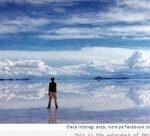
 What follows are two studies on moxibustion and immune function. I have become particularly interested in moxibustion because
What follows are two studies on moxibustion and immune function. I have become particularly interested in moxibustion because
1) Moxibustion may operate on a different biological model instead of electrical activity.
2) Moxibustion is a therapy that patients can do on their own at home.
Zhongguo Zhen Jiu. 2013 May;33(5):415-8.
[Impacts of moxibustion on erythrocyte immune function and T-lymphocyte subsets in athletes].
[Article in Chinese]
Li H, Zhang XS.
Source
Experiment Center, Sports Science College of Zhanjiang Normal University, Zhanjiang 524048, Guangdong Province, China.
Abstract
OBJECTIVE:
To observe the impacts of moxibustion at Shenshu (BL 23) and Guanyuan (CV 4) on red blood cell (RBC) immune function and T-lymphocyte subsets in athletes.
METHODS:
Twenty-four table tennis players in the training were divided into a trial group and a control group according to the paired design, 12 cases in each one. The training program was the same in two groups. In the trial group, the players received moxibustion at Shenshu (BL 23) and Guanyuan (CV 4) 3 hours after training for 15 min, the treatment was given once each day, continuously for 5 weeks. In the control group, no moxibustion was applied. Before and after trial, the cycle ergometer was adopted for the fixed-load exercise. After exercise, the blood was collected from the vein for the detection of RBC C3b receptor rosette rate (RBC-C3bRR), RBC immune compound rosette rate (RBC-ICR) and T lymphocyte subsets CD3, CD4, CD8 and CD4/CD8.
RESULTS:
(1) Compared with the results before trial in the trial group and those in the control group, RBC-C3bRR was increased apparently and RBC-ICR was decreased significantly after trail in the trial group (all P < 0.01). The levels of CD3 and CD4 were increased as compared with the control group (both P < 0.05). In the control group, the differences in CD8 and CD4/CD8 were not significant statistically as compared with those before trial and those in the trail group (both P > 0.05); (2) In the control group, compared with the results before trial, RBC-C3bRR was reduced apparently (P < 0.05), the levels of CD3, CD4 and CD8 as well as CD4/CD8 were all reduced after trial (all P < 0.05).
CONCLUSION:
For the athletes after heavy-load training, RBC immune and T-lymphocyte subsets function is decreased and the immunity is declined. Moxibustion at Shenshu (BL 23) and Guanyuan (CV 4) could improve erythrocyte immune function, relieve T-lymphocyte subsets function abnormality and increase the immunity in the athletes.
Zhongguo Zhen Jiu. 2013 Apr;33(4):299-302.
[Influence of moxibustion apparatus as adjuvant treatment for pulmonary tuberculosis and patient’s immune function].
[Article in Chinese]
Yang B, Lu YG, Qin Y, Pan DG.
Source
Department of Thoracic Surgery, Lanzhou Municipal Hospital of Pulmonary Disease, Lanzhou 730046, Gansu Province, China.
Abstract
OBJECTIVE:
To verify efficacy of moxibustion apparatus on pulmonary tuberculosis (PT) and explore adjuvant treatment method for PT.
METHODS:
One hundred cases of PT were randomly divided into a moxibustion group and a routine treatment group, 50 cases in each one. The regular antituberculous therapy (2HRZE/4HRE) was applied in both groups. In addition, the moxibustion apparatus was used at Bailao (EX-HN 15), Feishu (BL 13), Gaohuang (BL 43), Qihai (CV 6), Zhongfu (LU 1), Danzhong (CV 17), Guanyuan (CV 4), Zusanli (ST 36) and so on in the moxibustion group. The change of lesion area in chest radiography, degradation rate of bacte rium in the sputum, T-lymphocyte subsets and natural kill (NK) cells were observed before and after treatment in two groups.
RESULTS:
After the treatment for 3 months, there were 45 cases (90.0%) in the moxibustion group with more than 45% of focal absorption in chest radiography, which was obviously higher than 72.0% (36/50) in the routine treatment group (P < 0.01). The degradation rate of bacterium in the sputum in the moxibustion group was higher than that in the routine treatment group [82.0% (41/50) vs 60.0% (30/50), P < 0.01]. The CD3+, CD4+/CD8+ ratio of T-lymphocyte subsets and NK cells in the moxibustion group were significantly higher than those in the routine treatment group (P < 0.05, P < 0.01).
CONCLUSION:
On the basis of regular antituberculous therapy, moxibustion apparatus could significantly improve clinical effect, promote focal absorption and boost immunity, which is considered as an adjuvant treatment for PT.

